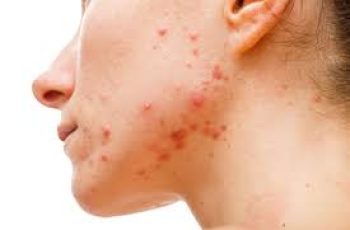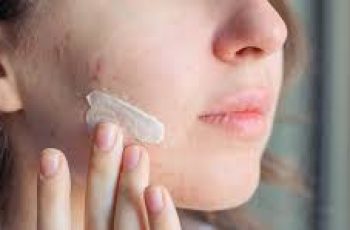
Surfactants, Detergents, and Cleansing Agents in Skincare: A Comprehensive Guide
Cleansing is one of the most fundamental steps in any skincare routine. Whether it’s removing makeup, sunscreen, excess sebum, or environmental pollutants, a good cleanser sets the stage for healthy skin.
At the heart of nearly all cleansers lie surfactants—chemical agents responsible for lifting and removing impurities from the skin and hair.
These compounds are often referred to as detergents or cleansing agents, and their effectiveness, gentleness, and compatibility with different skin types largely determine the overall performance of a skincare product.
In this comprehensive article, we’ll explore the roles of surfactants in cleansers, the science behind how they work, the various categories of surfactants, and their impact on different skin types.
We’ll also look at the relationship between surfactants and water hardness, and review examples of specific ingredients used in popular cleansing formulations. Understanding the chemistry of these compounds can help consumers make better-informed choices when selecting the right products for their skin.
What Are Surfactants and Why Are They Important in Cleansing?
Surfactants, short for “surface-active agents,” are amphiphilic molecules composed of two distinct parts: a hydrophilic (water-attracting) head and a hydrophobic (oil-attracting) tail.
This unique structure enables surfactants to interact with both water and oil.
When applied to the skin in a cleanser, surfactants surround oil-based debris such as sebum, makeup, and sunscreen, forming microscopic structures called micelles.
These micelles trap dirt and oil within their hydrophobic core, allowing impurities to be rinsed away with water.
Without surfactants, simply splashing water on the face would be insufficient to remove the oily residues and environmental grime that accumulate throughout the day.
Surfactants enable water to do the job more effectively by lowering its surface tension and increasing its ability to dissolve lipophilic (oil-loving) substances.
How Surfactants Work: The Micelle Mechanism
When a cleanser containing surfactants is massaged onto damp skin, the surfactant molecules align to form micelles.
The hydrophobic tails face inward, trapping oily dirt, while the hydrophilic heads remain on the outside, interacting with the surrounding water.
Upon rinsing, the micelles and their contents are lifted off the skin and carried away.
The efficiency of this process is influenced by the type of surfactant used, its concentration, the pH of the formulation, and the characteristics of the water (such as hardness or softness).
Surfactants can be optimized for different purposes—some offer deep cleansing, while others are better suited for gentle, daily use.
Types of Surfactants: Classification by Electrical Charge
Surfactants are classified into different categories based on the electrical charge of their hydrophilic head.
Each category has unique properties that influence its cleansing power, potential for irritation, and compatibility with different skin types.
1. Anionic Surfactants
These surfactants carry a negative charge and are known for their excellent cleansing and foaming properties.
They are particularly effective at removing oils and heavy-duty impurities, which makes them ideal for oily or acne-prone skin.
Examples: Sodium lauryl sulfate (SLS), sodium laureth sulfate (SLES), sodium C14-16 olefin sulfonate.
Pros: High foaming, effective oil removal.
Cons: Can be harsh, strip natural oils, and disrupt the skin barrier.
Sulfates, a subgroup of anionic surfactants, are among the most potent but potentially irritating ingredients.
Their strong cleansing power can lead to dryness, irritation, or disruption of the skin’s lipid barrier, especially in sensitive or dry skin types.
2. Nonionic Surfactants
These molecules have no charge on their hydrophilic head, making them gentler and less irritating.
They are typically used in formulations designed for sensitive or dry skin, as well as in baby products and leave-on skincare items.
Examples: Decyl glucoside, coco glucoside, polysorbate 20, glycereth-2 cocoate.
Pros: Gentle, less likely to irritate, suitable for barrier-compromised skin.
Cons: Lower foaming and cleansing power compared to anionic surfactants.
Nonionic surfactants are often used in combination with other surfactants to create balanced formulas that cleanse effectively while maintaining skin hydration and comfort.
3. Amphoteric Surfactants
Amphoteric surfactants can carry either a positive or negative charge, depending on the pH of their environment.
This gives them versatile functionality and makes them less irritating, even at higher concentrations.
Examples: Cocamidopropyl betaine, disodium cocoamphodiacetate.
Pros: Mild, pH-sensitive, compatible with both anionic and nonionic surfactants.
Cons: Moderate cleansing ability; sometimes used as secondary surfactants.
These surfactants are particularly valued for their ability to stabilize foam and reduce irritation when used in combination with harsher surfactants.
4. Cationic Surfactants
These surfactants have a positive charge, which makes them excellent at binding to negatively charged surfaces like hair and skin.
While commonly used in conditioners and disinfectants, they are rarely included in facial cleansers due to their high irritation potential.
Examples: Benzalkonium chloride, cetrimonium bromide.
Pros: Antimicrobial, good for hair conditioning.
Cons: Can be irritating to the skin, especially with frequent use.
Because of their bonding nature, cationic surfactants tend to linger on the skin or hair, which is beneficial for conditioning but not for facial cleansing.
5. Natural Surfactants (Saponins)
Saponins are naturally occurring plant-based surfactants found in herbs and roots.
They gently cleanse the skin without synthetic chemicals and are often included in natural and organic skincare formulations.
Examples: Soapwort extract, soapnut (Sapindus mukorossi), quillaja bark extract.
Pros: Eco-friendly, mild, ideal for dry or sensitive skin.
Cons: Weaker cleansing action, foam stability can be low, limited oil-removing ability.
Surfactant Behavior in Hard vs. Soft Water
The effectiveness of surfactants can vary dramatically depending on water hardness.
Hard Water: Contains high levels of calcium and magnesium, which can bind to anionic surfactants and reduce their effectiveness.
This leads to soap scum formation and can leave a residue on the skin.
Soft Water: Lacks interfering minerals, allowing surfactants to work optimally, resulting in better foam and improved cleansing.
To address issues related to hard water, many formulations include chelating agents like EDTA or citric acid to bind the minerals and maintain surfactant performance.
Sulfate-Free Cleansers: Why They’re Popular
Sulfate-free cleansers are becoming increasingly popular for a good reason.
Traditional sulfates like SLS are known for causing irritation, especially in individuals with eczema, rosacea, or a compromised skin barrier. As a result, many formulations now use milder alternatives such as:
Cocamidopropyl betaine (amphoteric)
Sodium cocoyl isethionate (syndet)
Decyl glucoside (nonionic)
These ingredients offer effective cleansing without the downsides associated with sulfates.
Sulfate-free products are particularly beneficial for people with sensitive skin, children, or anyone undergoing dermatological treatments.
Syndets: Synthetic Detergents for Modern Skincare
Syndet is short for synthetic detergent. These surfactants are man-made and designed to mimic the cleansing ability of soap while being far gentler on the skin.
Most syndets are pH-balanced and do not interact negatively with water minerals.
Common Syndets: Sodium cocoyl isethionate, sodium lauroyl methyl isethionate, sodium lauroyl glutamate.
Best For: Dry, sensitive, or mature skin.
Popular Products: Dove Beauty Bar, Cetaphil Gentle Cleanser.
Because of their formulation flexibility and minimal irritation, syndets are widely used in dermatology-recommended cleansers.
Choosing the Right Cleanser Based on Surfactant Type
Your skin type plays a critical role in determining which surfactant-based cleanser will work best for you.
Skin Type Recommended Surfactants
Oily/Acne-Prone Anionic + Amphoteric (e.g., Sodium C14-16 Olefin Sulfonate + Cocamidopropyl Betaine)
Dry/Sensitive Nonionic or Syndet (e.g., Decyl Glucoside, Sodium Cocoyl Isethionate)
Combination Blend of Amphoteric and Nonionic
Mature Skin Nonionic + Syndet, low pH formulations
Barrier-Impaired Avoid sulfates, use gentle syndets, amphoteric surfactants only
Summary: Finding the Balance in Cleanser Formulations
Understanding the science behind surfactants enables smarter skincare decisions. The choice of surfactant can significantly influence how a cleanser feels, performs, and impacts your skin over time.
Anionic surfactants = Strong but potentially drying
Nonionic surfactants = Gentle


